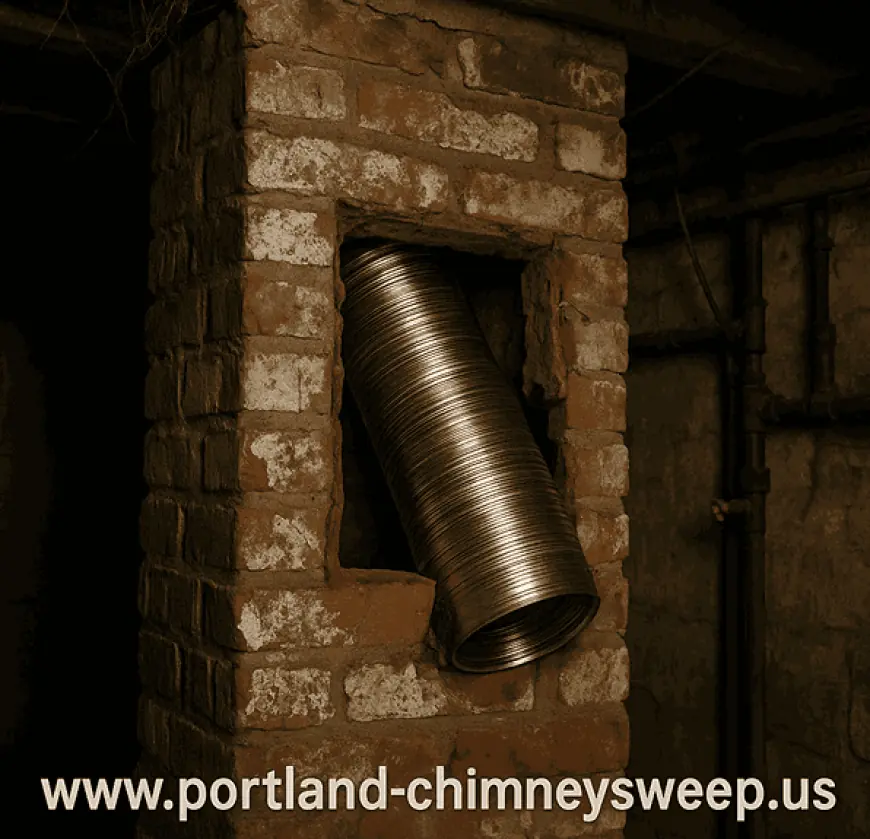Where Should You Begin When Considering a Chimney Liner in Portland
Learn why chimney liners matter in Portland and how to choose the right one for safety, efficiency, and peace of mind.

If you live in Portland and have a fireplace or wood stove, you may have heard about chimney liners. Maybe someone mentioned it during a home inspection, or you noticed your chimney sweep talking about it with a little concern. So, where do you begin if you’re thinking about getting a chimney liner? Don’t worry, it’s not as complicated as it sounds. Let’s walk through the basics together, step by step, in plain language—no fancy terms, just the stuff you really need to know about getting a chimney liner.
Spotting the Key Features: What Makes a Chimney Liner Worth It?
Think of a chimney liner as the unsung hero hiding inside your chimney. Its job is to keep the smoke and gases from your fire moving safely up and out, so they don’t sneak into your home or damage the chimney walls. But not all liners are the same, and in Portland’s damp, chilly climate, picking the right one matters even more.
- Material Choices: Stainless steel, clay, and cast-in-place are the three main types. Stainless steel tends to be the most popular in rainy Portland because it resists rust and lasts a long time.
- Fit and Flexibility: Some liners are rigid, while others can flex and bend to fit older, quirky chimneys. This can make a big difference in how well it works.
- Insulation: An insulated liner can help keep the heat in, making your fireplace more efficient and reducing the risk of creosote buildup—that’s the gunk that can catch fire.
- Compatibility: Not every liner works with every type of fireplace or stove. Gas, wood, and pellet appliances each have their own needs.
Before you buy anything, take a good look (or have a professional take a look) at what you already have. Sometimes, the liner is hidden or hard to see—another reason why a thorough inspection helps.
| Type | Main Advantage | Best For | Lifespan |
|---|---|---|---|
| Stainless Steel | Durable, resists corrosion | All fuel types, especially Portland’s wet weather | Up to 25+ years |
| Clay Tile | Low initial cost | Wood-burning fireplaces (in mild climates) | Up to 50 years, but cracks easily |
| Cast-in-Place | Reinforces old chimneys | Restoring historic homes | 20–50 years |
Staying Safe: Why Chimney Liners Matter More Than You Think
It’s easy to overlook what you can’t see, but the safety benefits of a good liner are huge. Portland’s rainy winters and cool, damp springs can be hard on chimneys, especially if water sneaks in and starts to erode the bricks or mortar. Here’s why a liner is more than just a “nice-to-have”:
- Prevents House Fires: A liner stops the heat from your fire spreading to the walls of your house, which lowers the risk of a fire starting where you can’t see it.
- Keeps Poisonous Gases Out: Without a liner, carbon monoxide and other dangerous gases can leak into your home. A liner keeps these out of your living space where they belong.
- Slows Down Chimney Damage: Moisture, creosote, and acids from smoke can eat away at the inside of a chimney. Liners act like a raincoat, protecting the structure itself.
The bottom line: If you want to use your fireplace or stove without worrying every time you light it, a good liner is the first step.
What Will It Cost? Planning Your Budget for a Chimney Liner
Let’s talk numbers. The cost of putting in a new chimney liner in Portland can vary quite a bit, depending on what you need. Here’s a general sense of what to expect:
- Inspection Fee: Usually, a professional will have to check out your chimney first. This might cost anywhere from $100 to $300, but it’s well worth it.
- Liner Cost: Stainless steel liners tend to run between $1,200 and $3,500, including installation. Clay liners are cheaper, but they are rarely installed in existing chimneys these days. Cast-in-place options are pricier, but sometimes necessary for older homes.
- Extra Repairs: If your chimney needs repairs before the liner goes in, or if you want insulation, that will add to the bill.
One tip: Get a few quotes from different local companies. Portland has a lot of experienced chimney pros, and prices can vary. Always ask for a breakdown so you know exactly what you’re paying for.
Emergency Services: What To Do If You Need Help Fast
Sometimes, you don’t get much warning that your chimney needs attention. Maybe you notice smoke backing up into your home, or you hear strange sounds coming from the fireplace. In those moments, waiting isn’t an option—you need help now.
- Find 24/7 Services: Some Portland companies offer round-the-clock emergency support. Save those numbers in your phone, just in case.
- Stay Safe: If you suspect a chimney fire or gas leak, get everyone out of the house and call emergency services right away. Don’t try to fix it yourself.
- Schedule an Urgent Inspection: Even if it’s not an obvious emergency, strange smells, smoke inside, or falling debris mean you should have your chimney checked ASAP.
Remember, it’s better to be safe than sorry. And once you’ve dealt with the immediate problem, circle back to having a liner installed if you don’t already have one.
Conclusion: Your First Step to a Safer, Cozier Home
Starting your journey toward a new chimney liner in Portland isn’t as overwhelming as it might seem at first glance. Begin by learning what your chimney needs and understanding your options. Take the time to ask questions and reach out to a trusted local expert. In the end, investing in the right liner means more peace of mind, greater safety for your family, and plenty of warm, worry-free fires for years to come.
Read More: Portland Chimney Sweep
What's Your Reaction?
 Like
0
Like
0
 Dislike
0
Dislike
0
 Love
0
Love
0
 Funny
0
Funny
0
 Angry
0
Angry
0
 Sad
0
Sad
0
 Wow
0
Wow
0


















































